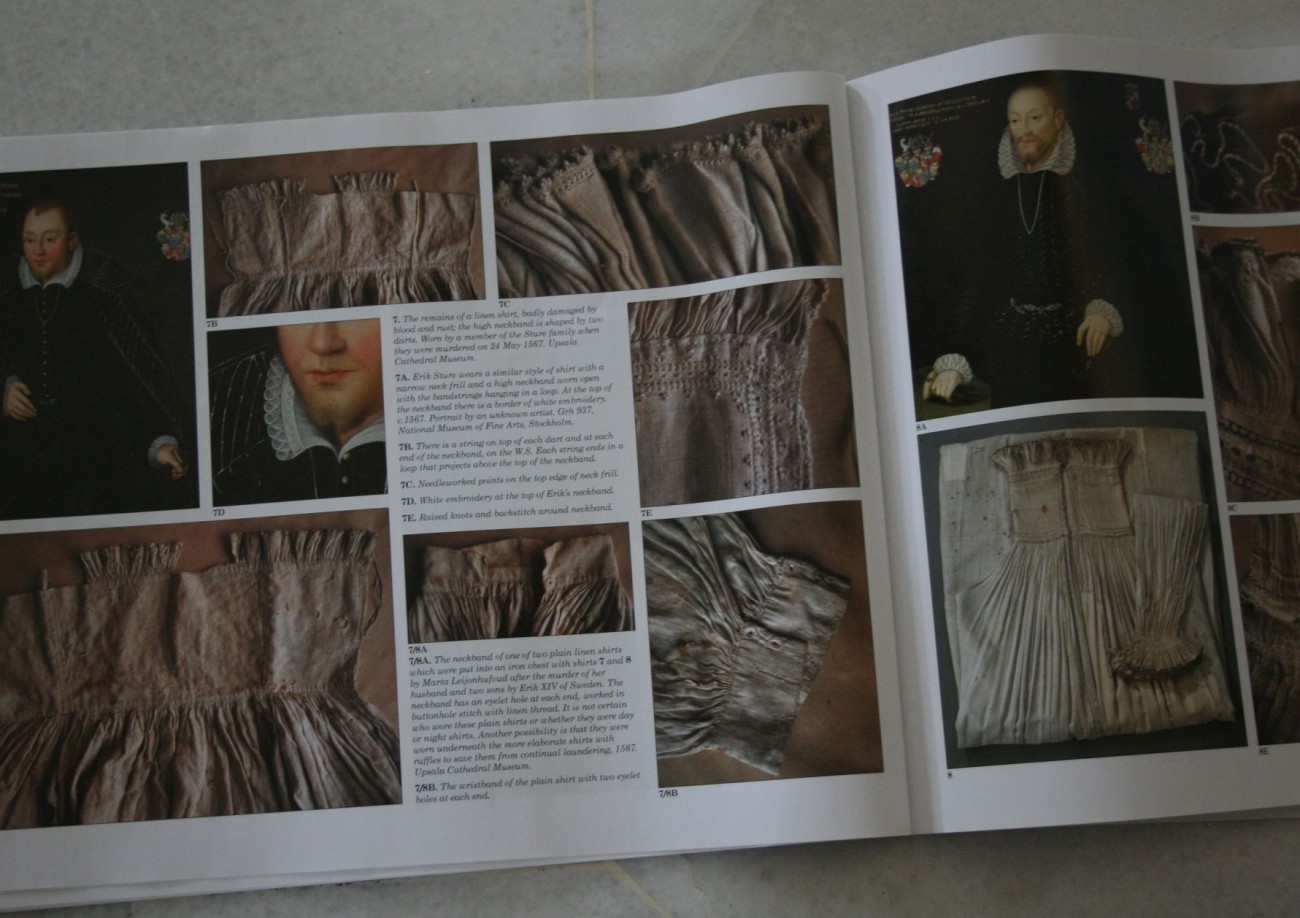お正月モードからもそろそろ抜け、仕事開始です。
今年2015年のデザインとパターンは、ほぼ終わっています。
新しいデザインが半分以上、定番デザインの素材違いなどが半分弱。素材はほとんどリネンですが、ドキドキしながらインドの工房にお願いしておいたカディコットンも仕上がって来て、これで役者が揃いました。準備は着々と進んでいます。
最後の一つ、イタリア・リニフィッチオのリネンの羽織を予定しているのですが、年末にはパターンとサンプルをいじくり回して、結局どうするのか決まらなかったのでした。
下の画像は、スウェーデンの貴族が16世紀に着ていたブラウスの写真。「決闘で負傷した時に着ていたもの」など、血のシミがついているものも。しかし、四半世紀以上も保存出来るとは、リネンはやはり丈夫ですねぇ。贅沢な刺繍や、手で寄せたギャザーが沢山入っていますが、現代ではこんなものはオートクチュールでもなければ作れないでしょう。
煮詰まった時は、これを眺めて気分転換です。
With New Year behind us, I can again focus on work.
I have completed almost all design and pattern work for 2015, both for Spring-Summer and Autumn-Winter. More than half are all new designs; the other half, previous popular designs with modifications, which I will make available with new materials. One final design for 2015, a linen coat, will be made from fabric from Linificio, a manufacturer located in Bergamo, in northern Italy.
The hand-woven Indian kadhi cotton cloth I ordered from a factory near Calcutta has arrived, and I look forward to working with this new natural fabric.
In the photo for today’s entry, you can see a blouse of the kind worn by a member of the Swedish royal family in the 16th Century. At that time, all clothing was hand sewn, of course. Today, the detail and all the time-consuming pleating and gathering of fabric, is doable only in the best of haute couture houses. Often, these antique clothes, though well maintained considering their age, have on them blood stains and less violent examples of day-to-day use.

